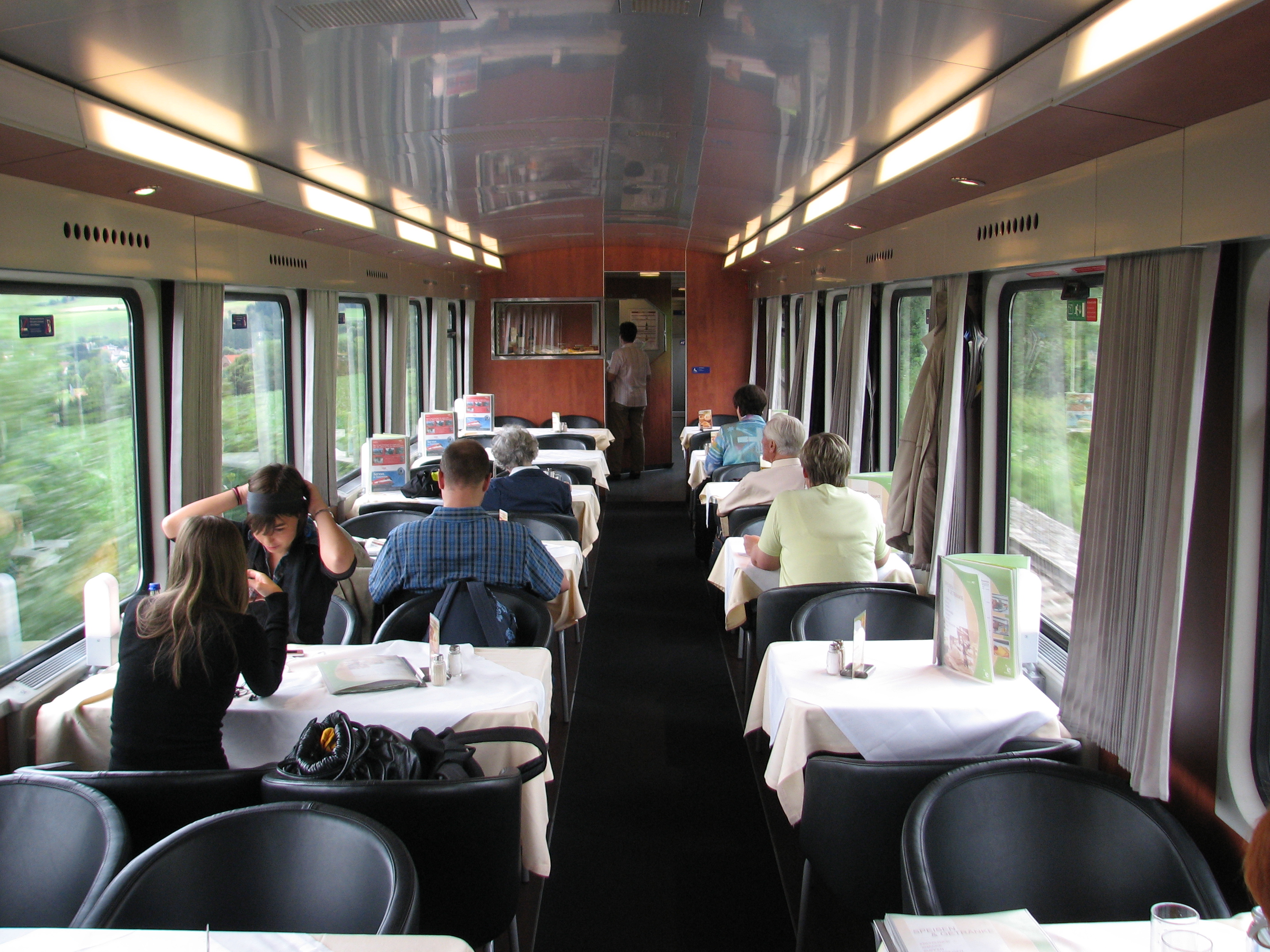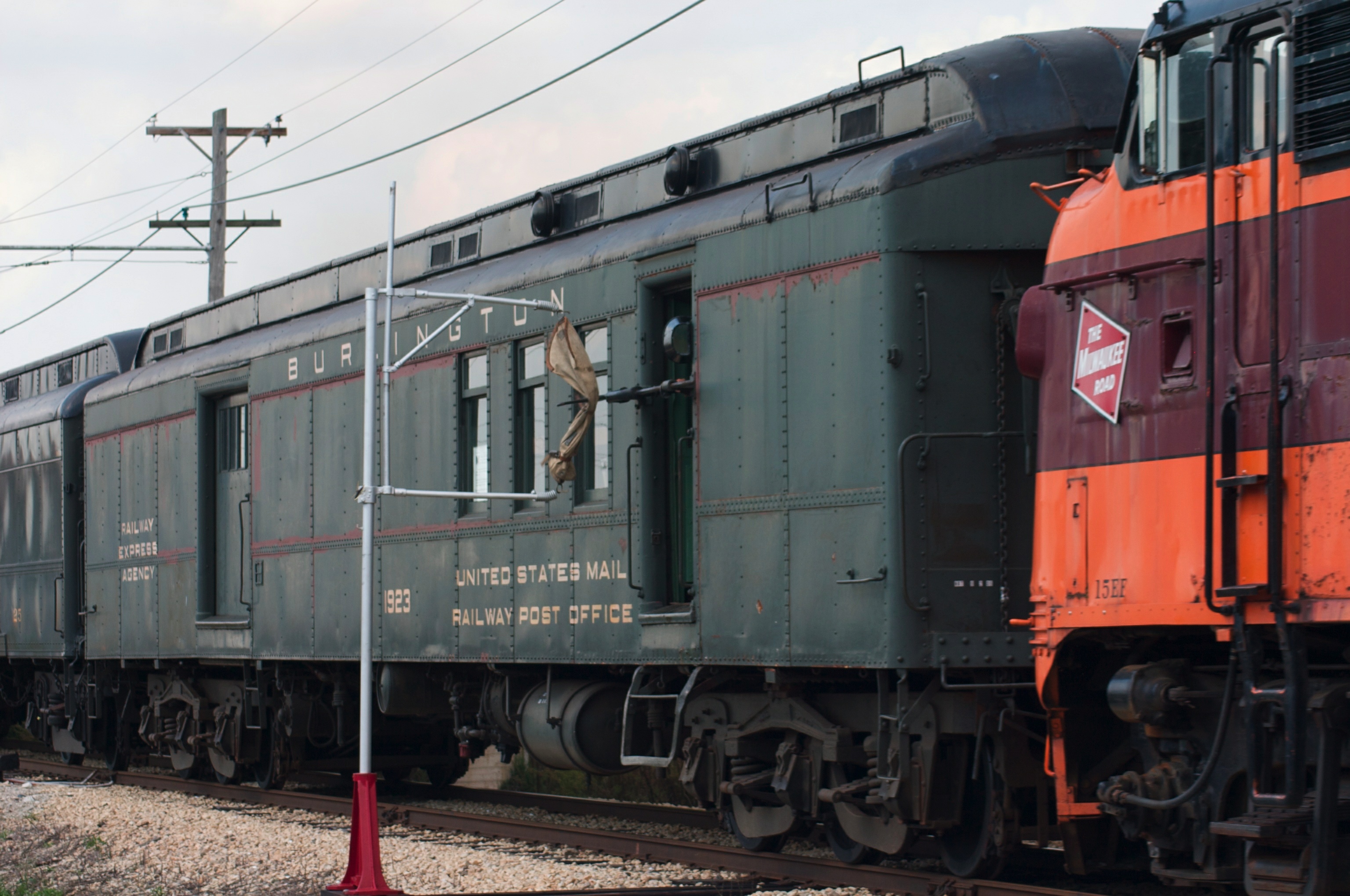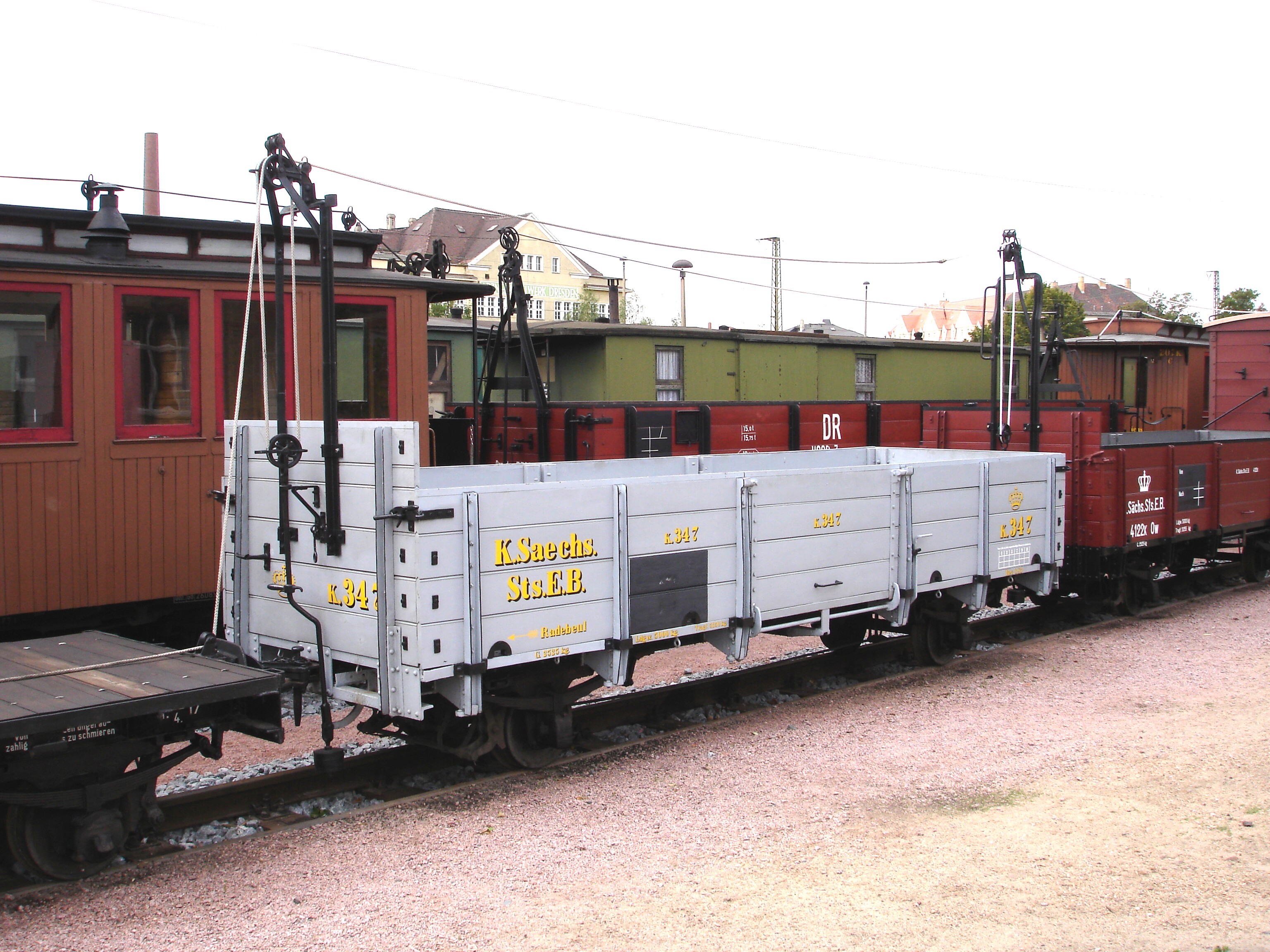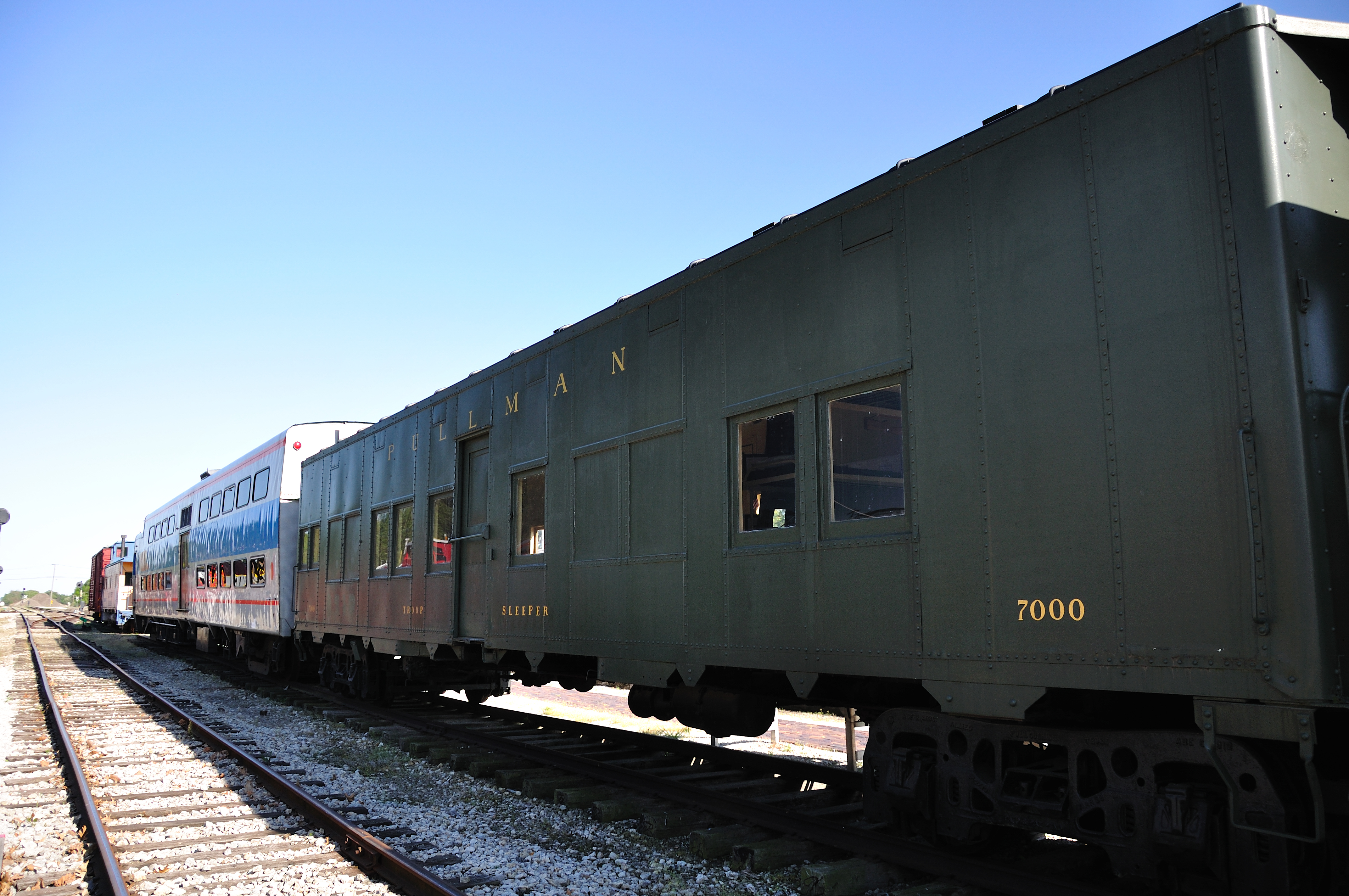|
German Railway Wagon Classes
The system of German railway wagon classes (''Wagengattungen'') was introduced in Germany in 1902 and 1905 by the Prussian state railways based on their system of norms, and was soon taken up by the other state railways (''Länderbahnen''). On the formation of the Deutsche Reichsbahn, the system became mandatory across the whole of Germany. In the course of the years more and more adjustments to it were made. It was finally replaced between 1964 and 1968 when the two German railway administrations - the Deutsche Bundesbahn and the Deutsche Reichsbahn (East Germany) - adopted the internationally standard UIC classifications for passenger coaches and goods wagons. Today, the system is still regularly being used for narrow gauge goods wagons, because these were not generally given UIC designations, as well as on many historical vehicles. The wagon class comprises one or more ''main class letters'' (''Hauptgattungszeichen'') (in capitals, sometimes with lower case letters in between) a ... [...More Info...] [...Related Items...] OR: [Wikipedia] [Google] [Baidu] |
Prussian State Railways
The term Prussian state railways (German: ''Preußische Staatseisenbahnen'') encompasses those railway organisations that were owned or managed by the State of Prussia. The words "state railways" are not capitalized because Prussia did not have an independent railway administration; rather the individual railway organisations were under the control of the Ministry for Trade and Commerce or its later offshoot, the Ministry for Public Works. The official name of the Prussian rail network was ''Königlich Preußische Staatseisenbahnen'' (K.P.St.E., "Royal Prussian State Railways") until 1896, ''Königlich Preußische und Großherzoglich Hessische Staatseisenbahn'' (K.P.u.G.H.St.E., " Royal Prussian and Grand-Ducal Hessian State Railways") until the end of the First World War, and ''Preußische Staatsbahn'' (P.St.B., "Prussian State Railway") until its nationalization in 1920. A common mistake is the use of the abbreviation K.P.E.V. in supposed reference to a mythical "Royal Prussian ... [...More Info...] [...Related Items...] OR: [Wikipedia] [Google] [Baidu] |
Departmental Wagon
Departmental vehicles, also called departmental wagons or engineering vehicles, are special railway vehicles used to support the engineering functions of the railway.Ellis, Iain (2006). ''Ellis' British Railway Engineering Encyclopaedia''. Lulu, p. 93. . Thus they serve the internal purposes of the railway company and are not used for general passenger or goods traffic. They are typically used to maintain railway facilities, not least the overhead catenary. Typical departmental vehicles include: * Drum carriers *Engineering vehicles * Hopper wagons * Mess coaches * Opens * Side rail loaders * Tool vans Railway vehicles Railway departmental vehicles are hauled by departmental locomotives and are usually railway wagons used for the transport of works material for the maintenance of railway facilities or wagons used for other internal purposes that have been converted or specially built. They usually travel in special work trains, frequently at low speeds. Only by exception, and ... [...More Info...] [...Related Items...] OR: [Wikipedia] [Google] [Baidu] |
Dining Car
A dining car (American English) or a restaurant car (British English), also a diner, is a railroad passenger car that serves meals in the manner of a full-service, sit-down restaurant. It is distinct from other railroad food service cars that do not duplicate the full-service restaurant experience, such as buffet cars, cars in which one purchases food from a walk-up counter to be consumed either within the car or elsewhere in the train. Grill cars, in which customers sit on stools at a counter and purchase and consume food cooked on a grill behind the counter are generally considered to be an "intermediate" type of dining car. History United States Before dining cars in passenger trains were common in the United States, a rail passenger's option for meal service in transit was to patronize one of the roadhouses often located near the railroad's "water stops". Fare typically consisted of rancid meat, cold beans, and old coffee. Such poor conditions discouraged many from makin ... [...More Info...] [...Related Items...] OR: [Wikipedia] [Google] [Baidu] |
Sleeping Car
The sleeping car or sleeper (often ) is a railway passenger car (rail), passenger car that can accommodate all passengers in beds of one kind or another, for the purpose of sleeping. George Pullman was the American innovator of the sleeper car. The first such cars saw sporadic use on American and English railways in the 1830s; they could be configured for Coach (rail), coach seating during the day. History Possibly the earliest example of a sleeping car (or ''bed carriage'', as it was then called) was on the London & Birmingham and Grand Junction Railways between London and Lancashire, England. The bed carriage was first made available to first-class passengers in 1838. In the spring of 1839, the Cumberland Valley Railroad pioneered sleeping car service in America with a car named "Chambersburg", between Chambersburg, Pennsylvania, Chambersburg and Harrisburg, Pennsylvania. A couple of years later a second car, the "Carlisle", was introduced into service. [...More Info...] [...Related Items...] OR: [Wikipedia] [Google] [Baidu] |
Lounge Car
A lounge car (sometimes referred to as a buffet lounge, buffet car, club car or grill car) is a type of passenger car on a train, in which riders can purchase food and drinks. The car may feature large windows and comfortable seating to create a relaxing diversion from standard coach or dining options. In earlier times (and especially on the "name" trains), a lounge car was more likely to have a small kitchen, or grill and a limited menu. Food was prepared to order and often cooked, though items such as club sandwiches would have usually been part of the offerings. The cars were often operated by the Pullman Company, and in other cases by the railroad directly as part of the dining car department (on the Atchison, Topeka and Santa Fe Railway the Fred Harvey Company operated the food concession). Lounge cars operated by Pullman were exclusively for the use of sleeping car passengers, while those operated by the railroad were available to coach as well as first-class travelers. Buff ... [...More Info...] [...Related Items...] OR: [Wikipedia] [Google] [Baidu] |
Flat Wagon
Flat wagons (sometimes flat beds, flats or rail flats, US: flatcars), as classified by the International Union of Railways (UIC), are railway goods wagons that have a flat, usually full-length, deck (or 2 decks on car transporters) and little or no superstructure. By contrast, open wagons have high side and end walls and covered goods wagons have a fixed roof and sides. Flat wagons are often designed for the transportation of goods that are not weather-sensitive. Some flat wagons are able to be covered completely by tarpaulins or hoods and are therefore suitable for the transport of weather-sensitive goods. Unlike a "goods wagon with opening roof", the loading area of a flat is entirely open and accessible once the cover is removed. Flats form a large proportion of goods wagons; for example in 1998 they comprised 40% of the total goods fleet owned by the German carrier, DB, the overwhelming majority of which were flat wagons with bogies. Typical goods transported by these ... [...More Info...] [...Related Items...] OR: [Wikipedia] [Google] [Baidu] |
Stanchion
A stanchion () is a sturdy upright fixture that provides support for some other object. It can be a permanent fixture. Types In architecture stanchions are the upright iron bars in windows that pass through the eyes of the saddle bars or horizontal irons to steady the leadlight. The French call the latter ''traverses'', the stanchions ''montants'', and the whole arrangement ''armature''. Stanchions frequently finish with ornamental heads forged out of the iron. Stanchions are also the metal supporting members of lighting mounted from a lower elevation. This includes the metal inclined member for mounting a streetlight to a telephone or power pole, and the dedicated metal vertical support of a self-supporting or bottom-fed streetlight. In this case, the stanchion pole may double as the Electrical conduit, raceway for the electrical feed to the lighting. In industrial installations, walkway lighting may be mounted with a stanchion that is secured to a hand-rail. Stanchion lights ... [...More Info...] [...Related Items...] OR: [Wikipedia] [Google] [Baidu] |
Guards Van
Brake van and guard's van are terms used mainly in the UK, Ireland, Australia and India for a railway vehicle equipped with a hand brake which can be applied by the guard. The equivalent North American term is caboose, but a British brake van and a caboose are very different in appearance, because the former usually has only four wheels, while the latter usually has bogies. German railways employed Brakeman's cabins combined into other cars. Many British freight trains formerly had no continuous brake so the only available brakes were those on the locomotive and the brake van. Because of this shortage of brake power, the speed was restricted to . The brake van was marshalled at the rear of the train so both portions of the train could be brought to a stand in the event of a coupling breaking. When freight trains were fitted with continuous braking, brake vans lost their importance, and were discontinued by many railways. However, they still continue on some important railways ... [...More Info...] [...Related Items...] OR: [Wikipedia] [Google] [Baidu] |
Railway Post Office
In Canada and the United States, a railway post office, commonly abbreviated as RPO, was a railroad car that was normally operated in passenger service as a means to sort mail en route, in order to speed delivery. The RPO was staffed by highly trained Railway Mail Service postal clerks, and was off-limits to the passengers on the train. In the UK and Ireland, the equivalent term was travelling post office (TPO). From the middle of the 19th century, many American railroads earned substantial revenues through contracts with the U.S. Post Office Department (USPOD) to carry mail aboard high-speed passenger trains; and the Railway Mail Service enforced various standardized designs on RPOs. In fact, a number of companies maintained passenger routes where the financial losses from moving people were more than offset by transporting the mail. History The world's first official carriage of mail by rail was by the United Kingdom's General Post Office in November 1830, using adapted rail ... [...More Info...] [...Related Items...] OR: [Wikipedia] [Google] [Baidu] |
Baggage Car
A passenger railroad car or passenger car (United States), also called a passenger carriage, passenger coach (United Kingdom and International Union of Railways), or passenger bogie (India) is a railroad car that is designed to carry passengers. The term ''passenger car'' can also be associated with a sleeping car, a baggage car, a dining car, railway post office and prisoner transport cars. The first passenger cars were built in the early 1800s with the advent of the first railroads, and were small and little more than converted freight cars. Early passenger cars were constructed from wood; in the 1900s construction shifted to steel and later aluminum for improved strength. Passenger cars have increased greatly in size from their earliest versions, with modern bi-level passenger cars capable of carrying over 100 passengers. Amenities for passengers have also improved over time, with developments such as lighting, heating, and air conditioning added for improved passenge ... [...More Info...] [...Related Items...] OR: [Wikipedia] [Google] [Baidu] |
Open Wagon
Open wagons (trucks in the UK) form a large group of railway goods wagons designed primarily for the transportation of bulk goods that are not moisture-retentive and can usually be tipped, dumped or shovelled. The International Union of Railways (UIC) distinguishes between ordinary wagons (Class E/ UIC-type 5) and special wagons (F/6). Open wagons often form a significant part of a railway company's goods wagon fleet; for example, forming just under 40% of the Deutsche Bahn's total goods wagon stock in Germany. UIC standard goods wagons Since the 1960s, the majority of goods wagons procured by European railway administrations have been built to standards laid down by, or based on, those established by the UIC. In addition to open wagons the table also shows wagons with opening roofs (Class T), whose design is based on open wagons. File:El-Wagen-UIC-Bauart1-Zittau.jpg, Twin-axled UIC Type 1 open wagon, used as an ash wagon, on a transporter wagon in Zittau File:Es-Wa ... [...More Info...] [...Related Items...] OR: [Wikipedia] [Google] [Baidu] |
Troop Sleeper
In United States railroad terminology, a troop sleeper was a railroad passenger car which had been constructed to serve as something of a mobile barracks (essentially, a sleeping car) for transporting troops over distances sufficient to require overnight accommodations. This method allowed part of the trip to be made overnight, reducing the amount of transit time required and increasing travel efficiency. History Background and development Between December 1941 and June 1945 U.S. railroads carried almost 44 million armed services personnel. As there were not enough cars and coaches available to meet the massive need for troop transit created by World War II, in late 1943 the U.S. Office of Defense Transportation contracted with the Pullman Company to build 2,400 troop sleepers, and with American Car and Foundry to build 440 troop kitchen cars. This new rolling stock was either converted from existing boxcars or built from scratch based on Association of American Railroads standa ... [...More Info...] [...Related Items...] OR: [Wikipedia] [Google] [Baidu] |







